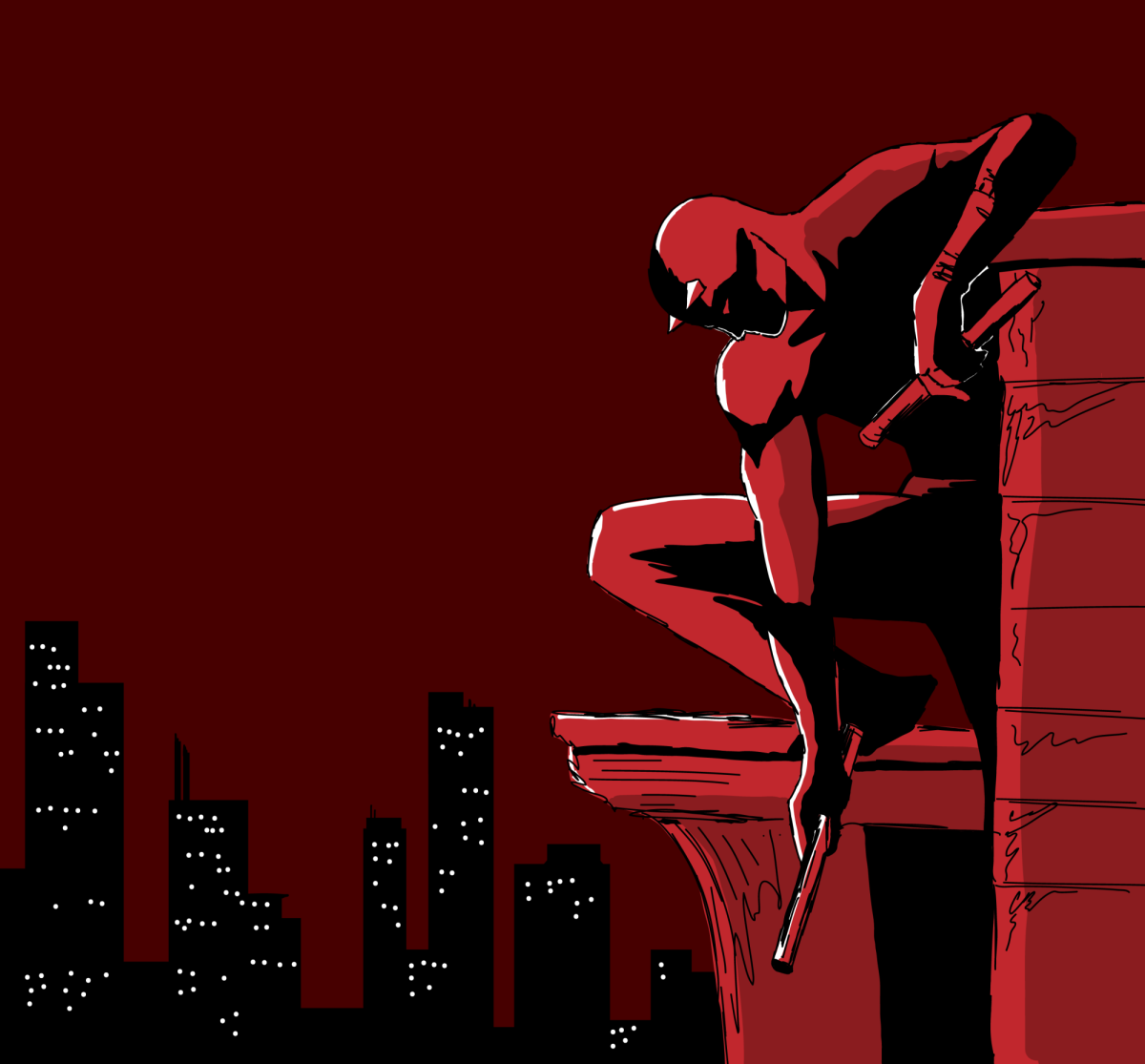
Cole Bertelsen
Six years after the original Netflix series was cancelled, “Daredevil: Born Again” completed its first season on Disney+ this April. While the show sees the return of many mainstays from the original “Daredevil,” a litany of roadblocks have led this revival down a wrong path.
Earlier on in the Marvel Cinematic Universe’s lifespan, Marvel made a deal with Netflix to produce multiple shows centered around lesser-known, street-level superheroes. The first, and by far the most popular, was “Daredevil,” which released its first of three seasons in 2015. With the launch of Disney’s own streaming service in 2019 came the swift cancellation of all Marvel Netflix shows, much to the frustration of fans.
Now firmly in the television era of Disney+ Marvel content, the franchise eventually chose to revive the beloved show. However, despite the critical success of the original, Disney initially brought on a new production team to head the sequel series, which planned to bring the story in quite a different direction.
Announcements about plans regarding the show began to alarm fans, especially that multiple heavily influential characters would not be included in the new story. The show was filmed, and likely due to expected backlash, members of the original production team were hastily brought on, along with the excluded characters’ actors.
While this move clearly led to a better end result than it would have otherwise, what it led to was a Frankensteined mashup of two very different approaches to “Daredevil: Born Again.” According to what information about the production has been made public, instead of scrapping the old, worse episodes, the majority were kept, fairly unaltered. The new production team added episodes bookending the season, meaning that according to leaks, episodes 1, 8 and 9 are by the “Netflix” show team, and episodes 2-7 are by the “Disney” team.
This led to a noticeable disconnect in the plot between episodes. The team for the tacked-on episodes were saddled with the storyline in the rest of the show which they had to stick to, meaning those beloved characters mentioned earlier, which were brought in last-minute, are in a grand total of one to two episodes each. An especially loved character is killed within minutes of episode 1 beginning, which is made less frustrating with the knowledge that the original team planned for the death to be offscreen.
It’s difficult not to feel pity for the actors of the original series that were shunned by the new team, only to get dragged in last-minute, then be paraded around to promotional events, with the knowledge that they have mere minutes in the end product.
After episode 1, a time skip leaves Daredevil — blind lawyer Matt Murdock by day — in a life completely unlike his old one. Each of his close friends is either dead or randomly moved across the country, and in their place are one-dimensional, cardboard cutout replacements. With hamfisted attempts at filling the holes in Matt’s life that they made, the writers struggle to produce memorable or likeable characters.
The characters that do get to stick around aren’t quite the same as how fans may remember them. The primary antagonist to Matt, the crime boss Wilson Fisk — a.k.a. Kingpin — is a passive, apologetic shell of what he once was. While he regains his ruthlessness toward the season’s end, the reasoning behind his initial behavior shows a distinct misunderstanding of his character by the writers.
A common praise of the Netflix show was its cinematography. Known for creative lighting, creative editing and fantastic fight scene choreography, expectations were high for “Daredevil: Born Again.”
The biggest and most cutting critique I have for this show’s camerawork is that it’s exceptionally average. Rarely is there a shot that feels innovative or noteable, with the exception of episodes 8 and 9’s sequences with another popular villain the Netflix crew brought back.
While the old show was famous for its one-take action scenes, this show’s fight scenes are obsessively over-edited, choppy to the point action feels confusing and at times slow.
While “Born Again” is arguably above most recent MCU installments in terms of quality, the original Netflix show — now findable on Disney+ — was a bolt of lightning I fear won’t strike twice.